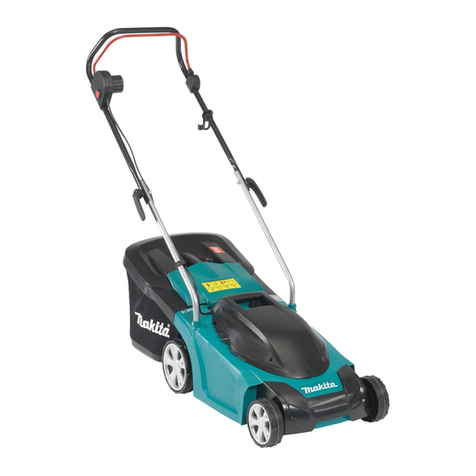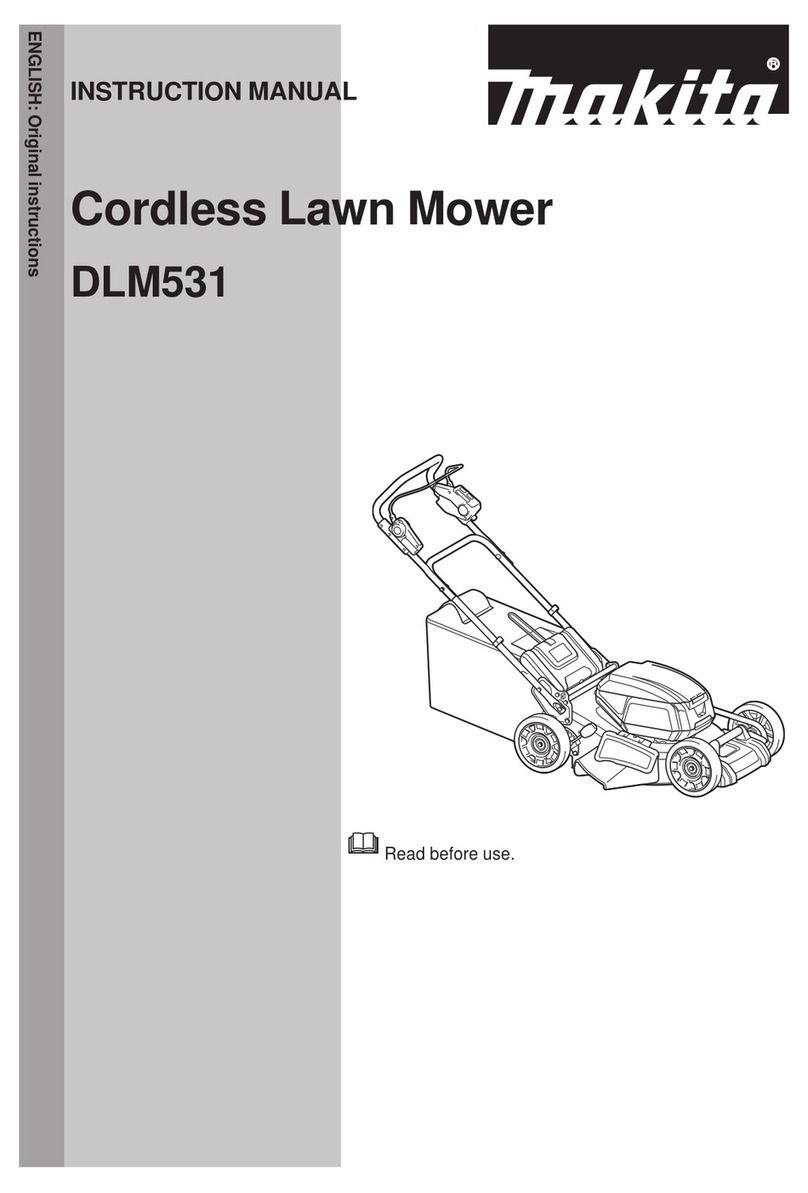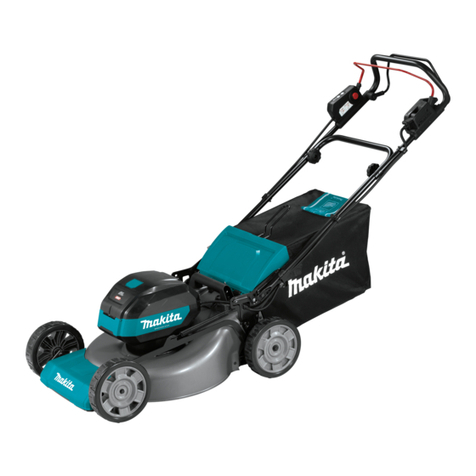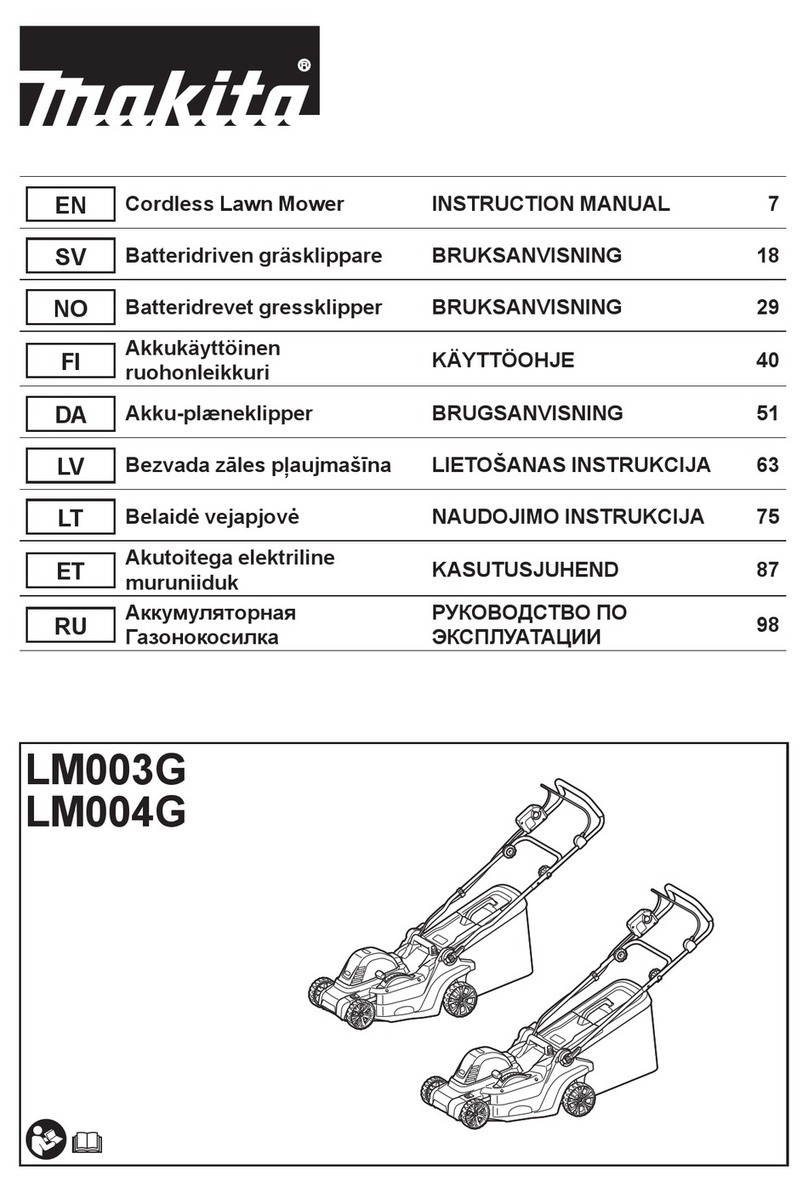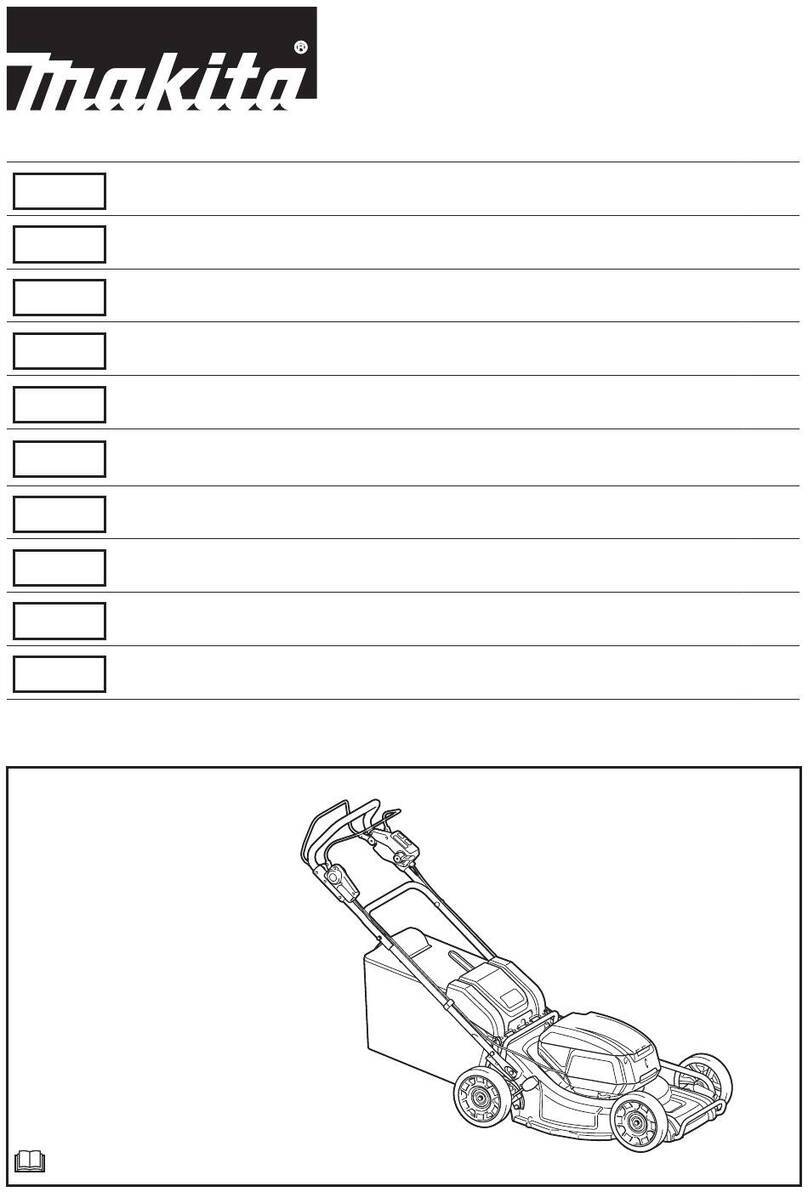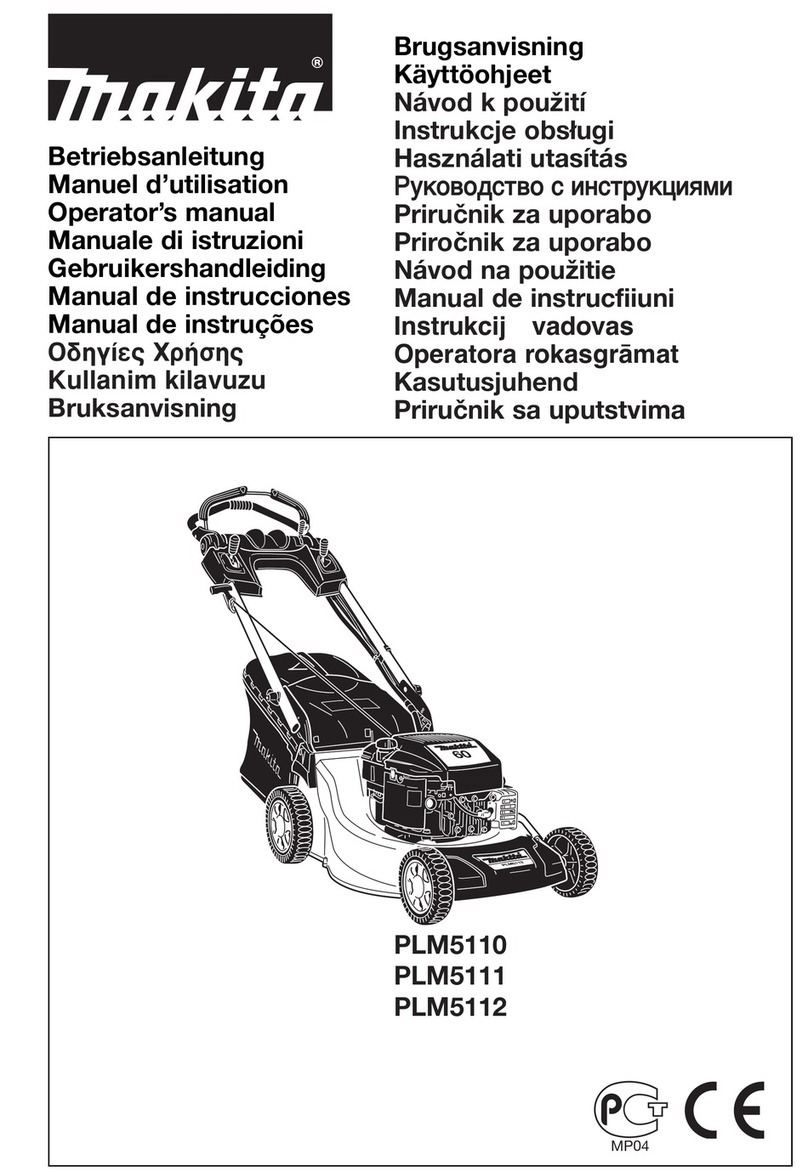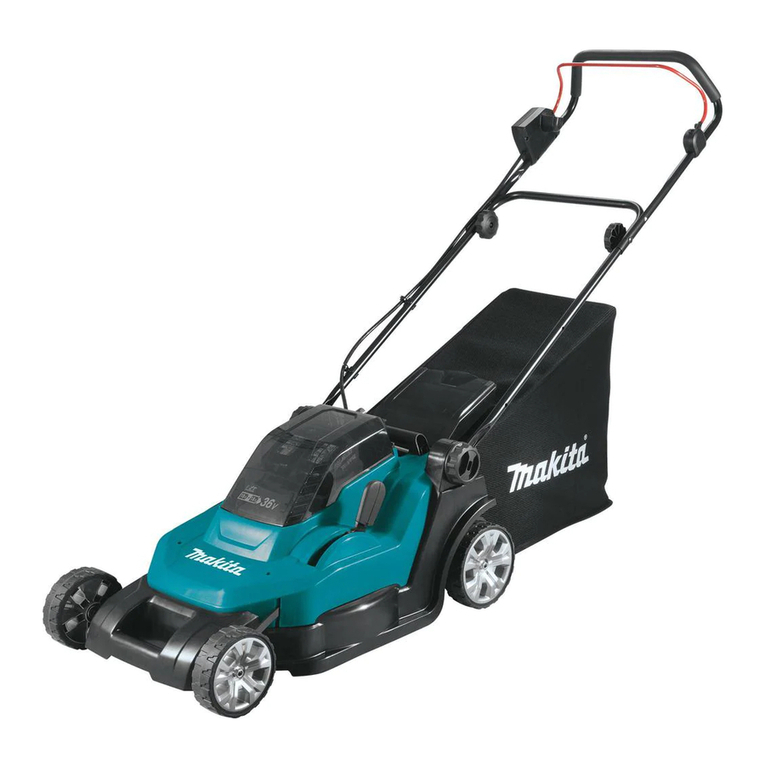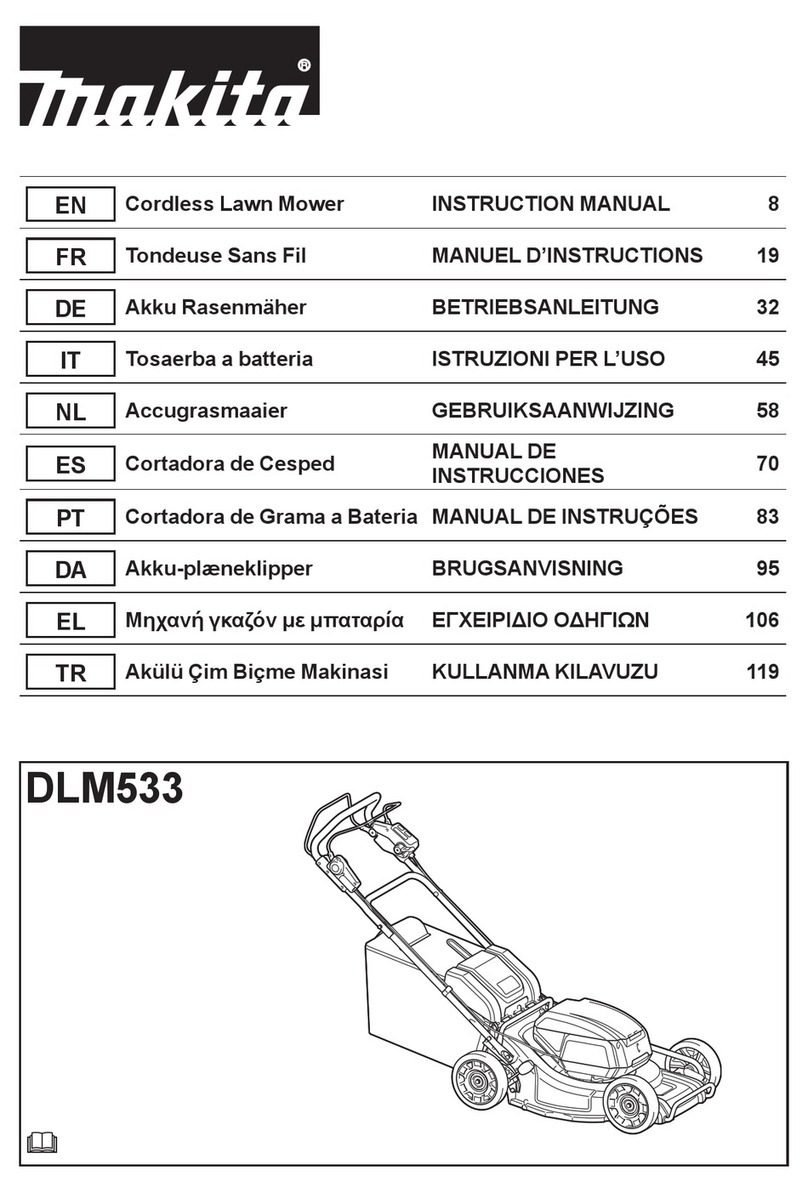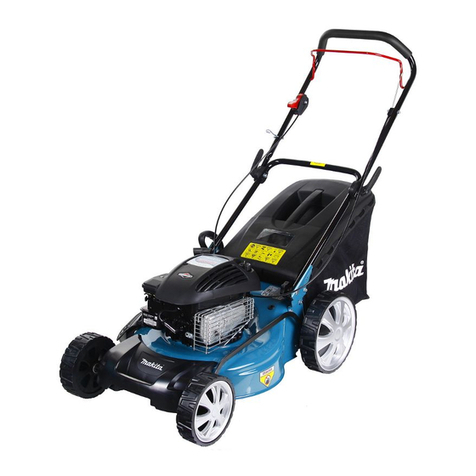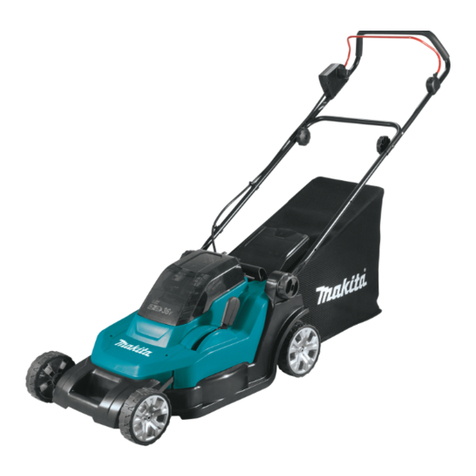
9
- add fuel before starting the engine. Never remove
the cap of the fuel tank or add petrol while the
engine is running or when the engine is hot;
- if petrol is spilled, do not attempt to start the engine
but move the machine away from the area of
spillage and avoid creating any source of ignition
until petrol vapors have dissipated;
- replace all fuel tank and container caps securely.
• Replace faulty silencers.
• Before using, always visually inspect to see that the
blades, blade bolts and cutter assembly are not worn or
damaged. Replace worn or damaged blades and bolts
in sets to preserve balance.
Operation
• Do not operate the engine in a confined space where
dangerous carbon monoxide fumes can collect.
• Mow only in daylight or in good artificial light.
• Avoid operating the equipment in wet grass, where
feasible.
• Always be sure of your footing on slopes.
• Walk, never run.
• For wheeled rotary machines, mow across the face of
slopes, never up and down.
• Exercise extreme caution when changing direction on
slopes.
• Do not mow excessively on steep slopes.
• Use extreme caution when reversing or pulling the
lawn mower towards you.
• Stop the blade(s) if the lawn mower has to be tilted for
transportation when crossing surfaces other than
grass, and when transporting the lawn mower to and
from the area to be mowed.
• Never operate the lawn mower with defective guards,
or without safety devices, for example deflectors and/or
grass catchers, in place.
• Do not change the engine governor settings or
overspeed the engine.
• Disengage all blades and drive clutches before starting
the engine.
• Start the engine carefully according to instructions and
with feet well away from the blade(s).
• Do not tilt the lawn mower when starting the engine.
• Do not start the engine when standing in front of the
discharge chute.
• Do not put hands or feet near or under rotating parts.
Keep clear of the discharge opening at all times.
• Never pick up or carry a lawn mower while the engine
is running.
• Stop the engine and disconnect the spark plug wire,
make sure that all moving parts have come to a
complete stop and, where a key is fitted remove the
key:
- before clearing blockages or unclogging chute;
- before checking, cleaning or working on the lawn
mower;
- after striking a foreign object. Inspect the lawn
mower for damage and make repairs before
restarting and operating the lawn mower;
- if lawn mower starts to vibrate abnormally (check
immediately).
• Stop the engine and disconnect the spark plug wire,
make sure that all moving parts have come to a
complete stop and, where a key is fitted remove the
key:
- whenever you leave the lawn mower;
- before refueling.
• Reduce the throttle setting during engine shut down
and, if the engine is provided with a shut-off valve, turn
the fuel off at the conclusion of mowing.
Maintenance and storage
• Keep all nuts, bolts and screws tight to be sure the
equipment are in safe working condition.
• Never store the equipment with petrol in the tank inside
a building where fumes can reach an open flame or
spark.
• Allow the engine to cool before storing in any
enclosure.
• To reduce the fire hazard, keep the engine, silencer,
battery compartment and petrol storage area free of
grass, leaves, or excessive grease.
• Check the grass catcher frequently for wear or
deterioration.
• Replace worn or damaged parts for safety.
• If the fuel tank has to be drained, this should be done
outdoors.
WARNING: Do not touch rotating blade.
WARNING: Refuel in a well ventilated area with
the engine stopped.
3. PARTS DESCRIPTION (Fig. 1)
Including
A: Spark plug wrench
4. TECHNICAL DATA
Model PLM5600
Engine type B&S 675EX Series,
ReadyStart
Self-propelled Yes
Engine displacement 190 cm3
Blade width 560 mm
Rated speed 2,800/min
Fuel tank capacity 1.0 L
Oil tank capacity 0.6 L
Grass catcher capacity 70 L
Net weight 39.8 kg
Height adjustment 20-75 mm, 8 adjustment
